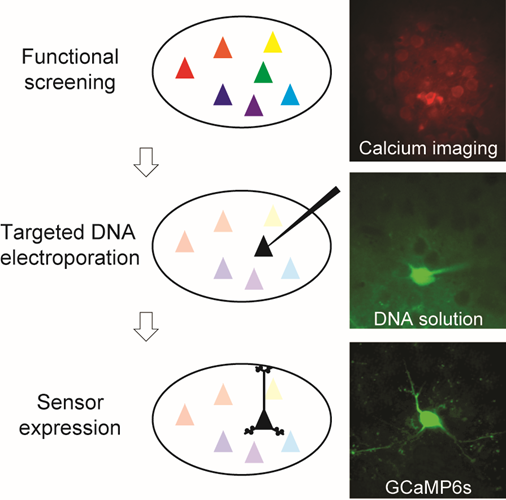The challenge
The cerebral cortex can perform powerful computations, including those involved in higher cognitive functions (e.g., sensory perception). These computations are achieved by cortical circuits composed of diverse individual neurons, and rely on delicate activity balance and orchestrated interplay among the neurons. Subtle imbalance and miscommunication can lead to major dysfunction, underlying many neurological disorders.
One of the common and yet unexplained features in cortical circuits is functional diversity; only a fraction of neurons in a network are highly active during particular neural processing, while the majority remain silent. However, it is not clear how functional diversity translates to circuit computations. It is also unclear how it is biologically implemented.
The Method
Technical challenges have hampered investigations on functional diversity. Functional diversity as a whole has been quantitatively captured by unbiased large-scale sampling approaches at a single-cell resolution (e.g., two-photon population calcium imaging), but such approaches do not provide details into the individual neurons, including cell-physiology and single-cell transcriptome.
Our lab overcomes this technical hurdle using a novel approach: activity-based cell-targeting for single-cell DNA electroporation.
Different plasmids can clarify different single-cell aspects, including but not limited to:
- What inputs shape the response of a unique neuron? (with an activity sensor);
- What impacts do unique neurons have on network processing? (with an activity manipulation protein); and
- How is functional uniqueness linked to genetic and anatomical diversity? (with a marker protein combined with single-cell transcriptome or transparent brain-tissue)

Current projects
- Sensory processing in the primary visual cortex.
- Reward processing in the prefrontal cortex.
- Impaired processing in brain disorders.
Techniques/expertise
- Two photon population calcium imaging
- Two photon subcellular imaging
- Optogenetics
- Single-cell DNA electroporation in vivo
Disease models
- Strokes
- Alzheimer’s Disease